Pocket Marine Chronometer Valuations & History
Pocket Marine Chronometers and deck watches began their development in the eighteenth century in response to the increasing need for accuracy when keeping time at sea. Accurate time was imperative for knowing precisely where you were on long journeys at sea to prevent loss of life and goods.
Early chronometers were often referred to as “timekeepers” and were used by ships’ officers to determine longitude, or east-west position, at sea. One of the earliest pioneers in marine timekeeping was John Harrison, who designed and built the first successful marine chronometer in the mid-1700s. His H4 model was incredibly accurate for its time, losing only five seconds per day. This breakthrough allowed sailors to accurately calculate their longitude and navigate with greater precision.
Over time, advancements in technology led to improved accuracy and design of pocket marine chronometers and deck watches. These instruments became essential tools for navigation on ships of all sizes, from military vessels to merchant ships. They were also widely used by explorers during expeditions to uncharted territories.
Find Me A Specialist Pocket Watch Valuer
How To Sell: Auction or Private Sale?
Mark Littler Ltd. are one of the only independent advisers in the antique industry. We offer trusted, independent advice to help you sell your Pocket Watch for the highest possible price.
Selling at an auction might provide your watch with greater exposure. However, with a combined average of 45% in gross buyers’ and sellers’ fees, this approach might prove to be a false economy.
Conversely, finding a private buyer for your pocket watch through our services could net you 33% more than if you sold it via auction, as our fees are only 12%.
What We Do For You
Simply fill in your contact details below and you will get an automatic referral to a leading pocketwatch auction expert who will give you an auction estimate and advise on how to sell with them. We will also see if we are able to get any offer from our private clients.
If we get any offers we will send these within 4 days. All offers are without obligation and there are no fees to pay us if you decide to sell at auction.
Pocket Watch Valuation Tips
To get the most accurate valuation of your pocket watch simply ensure you provide the following information:
- Include the width of the pocket watch across the dial but DO NOT include the winder or bow in this measurement.
- Let us know if the watch is working – just knowing that it ticks when wound is enough.
- How heavy is the watch? While we can value pocket watches simply by looking at the images, if you can let us know the total weight of the watch (in grams) then we can be a lot more accurate.
- PROVENANCE! Who owned the watch before it came to you? Perhaps it was a family member who fought in a war, or a relative who had friends in high places. These stories matter and can impact the value of the watch more than you think.
- Boxes and paperwork. Does the watch have its original box and paperwork? If so let us know as this will make a difference to the valuation.
Expert Pocket Watch Valuation
Use the form below or send images of your pocket watch to be connected with a pocket watch expert.
What Our Customers Say
What To Look For In Your Pocket Marine Chronometer
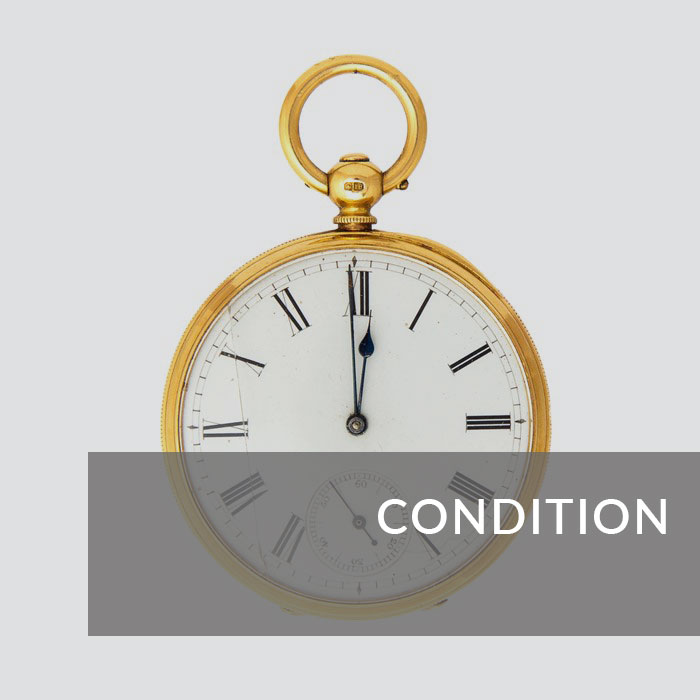
Condition/originality
The condition and originality of a watch has the greatest bearing on its value. What could outwardly appear to be a rare 17th century verge pocket watch, may have had a large proportion of its movement replaced or cannibalised over the years (replacement dial etc). These changes might only be known to a watchmaker or collector so a guarantee of originality will positively impact the value if you are looking to sell.
The outward condition of the watch is easier to assess yourself. Cracks to the dial, worn cases or erased presentation engravings can negatively impact the value of a pocket watch.
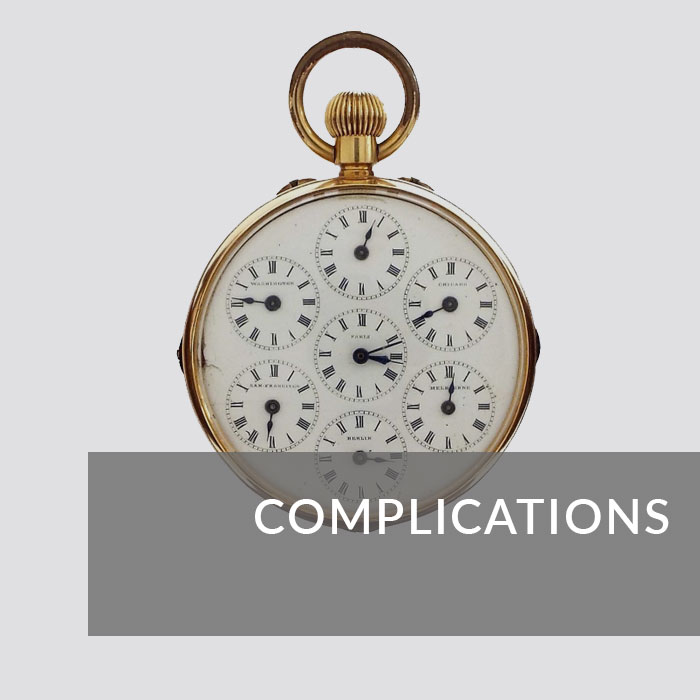
Complications
Very broadly speaking, the more complications the greater the value of the watch. Minute repeaters are some of the most sought-after complications as well as: tourbillon, split-seconds chronograph (or rattrapante), chronometers, perpetual calendar and phases of the moon, to name but a few.
If your watch has only the repeating complication then the repeating frequency (hour, quater, minute etc) will impact the value. With rarer repeating frequencies generally more sought after. Quarter repeaters are the most common. The mode of repeating (bell, gong, vibration) will also have an impact.
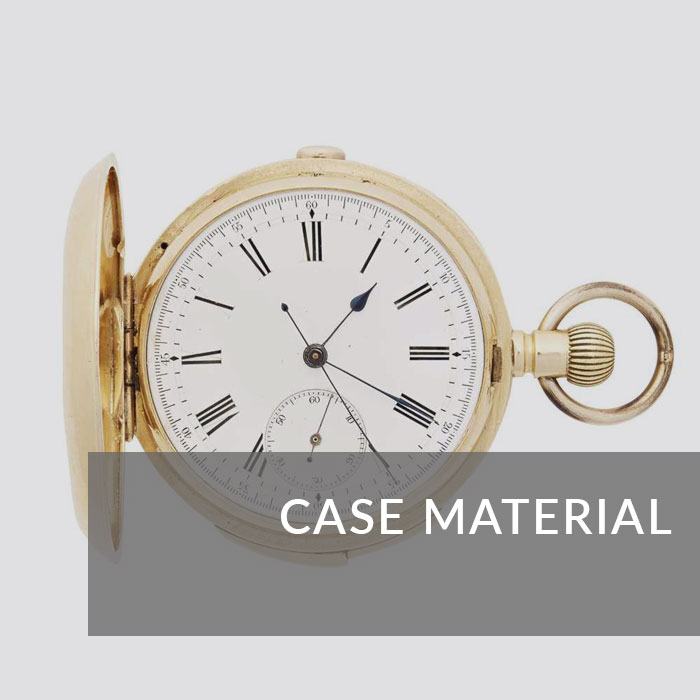
Case material
With the exception of watches with ‘out of the ordinary’ movements or features (chronometers etc) the case material can have a significant bearing on the value of the watch. Generally speaking 18ct gold pocket watches are more valuable than 9ct gold pocket watches, silver pocket watches and gold or silver plated pocket watches are worth less again.
The most obvious example of this can be seen with gold cased watches: three seemingly identical watches with identical Waltham movements could be several thousand pounds different in value depending on the case material, i.e. gold plated vs. 9ct gold vs. 18ct gold.
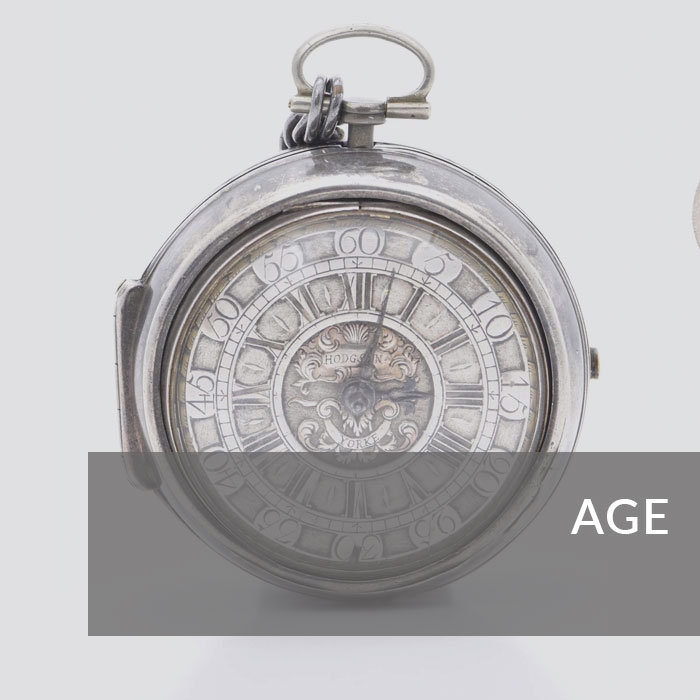
Age
The most expensive pocket watch ever sold at auction was only made in 1933. The price of the Vacheron Constantin Reference 57260 was not released, but it is fair to estimate that it is likely the most expensive pocket watch ever produced, and was only made in 2015.
As such the age of a watch does not necessarily invoke a high value. For example, pair cased silver verge watches from the reign of George III can be sold for as little as £100 at auction (condition dependant) yet an Edwardian minute repeater can easily sell for £1,000+.
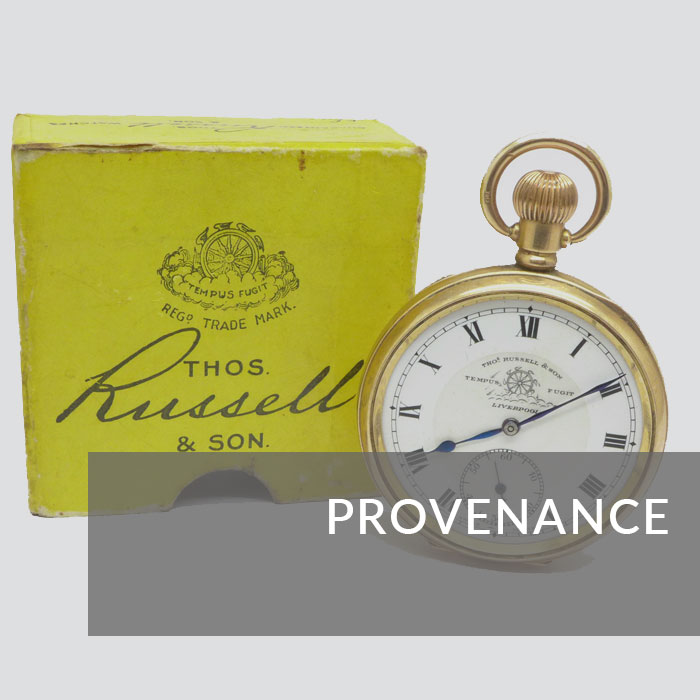
Provenance & certificates
Provenance can add a significant amount of value to a watch and sometimes the provenance will be of more value than the watch itself.
A good example of this would be a watch that could be proven to have been on the Titanic; the story attached to the watch is what would be valuable rather than the pocket watch itself.
The original chronometer certificates, receipts, boxes and paperwork can also add significant value to a watch when they are still present.
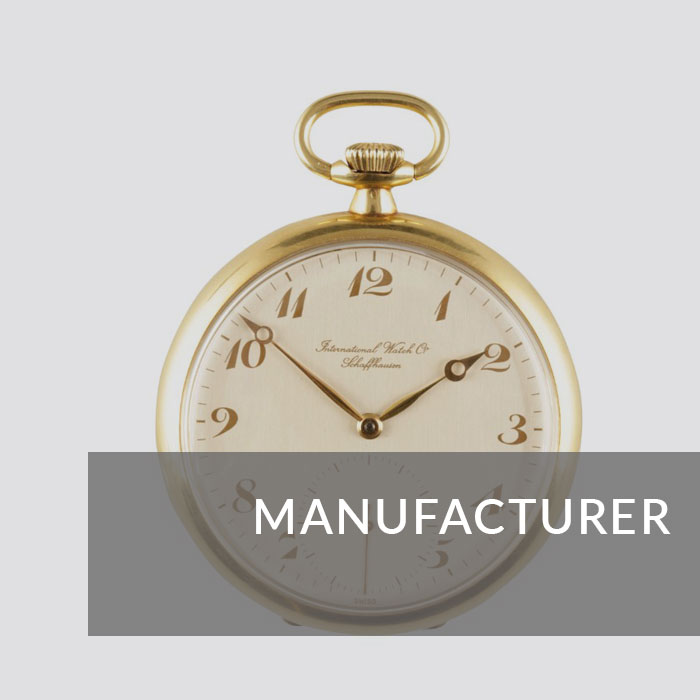
Manufacturer
In alphabetical order here is a list of some manufacturers that command a significant premium:
- Audemars Piguet
- Breguet
- Harrison
- IWC
- Massey
- Mudge
- Omega
- Patek Phillpe
- Perrelet
- Rolex
- Tiffany
- Tompion
- Vacheron Constantin
- Zenith
The History of Pocket Marine Chronometers
Navigation at sea
In 1714 the Board of Longitude was established by the British Parliament in order to overcome the issues of navigating precisely at sea. The aim was simple; create a device that would not lose or gain more than two minutes over a two-month journey. The reward was £20,000 – around £4million in today’s terms, and many clockmakers dedicated their lives to solving the problem.
Similar rewards were offered by France, Spain and Holland, but it was British watchmaker John Harrison who eventually won the prize in 1761 for his watch known as H4.
John Harrison’s H4
Harrison’s H4 overcame the issues caused by the changing temperatures experienced during a two-month journey at sea by using a bimetallic composition for the balance wheel. Two metals were used whose characteristics response to temperature change were such that they cancelled each other out and thus provided a constant response in the balance wheel through the changing temperatures. Ultimately however, H4 was based upon a highly refined verge escapement, which meant it was unsuited to mass production and was eventually superseded.
The verge escapement would be replaced in future marine chronometers, however Harrison’s work on bimetallic composition and caged roller bearings was an important part of marine chronometer development. Furthermore, his work encouraged others to submit watches to the Board of Longitude. Thomas Mudge was one watchmaker of note involved in the furthering of Harrison’s work and who is also accredited with the creation of the first detached lever escapement – which is largely recognisable as the escapement type used in modern pocket watches.
Detached escapements
Detached escapement types were very important for the advancement of the accuracy of pocket watches in general. Detached escapements allow the mechanism to swing undisturbed for the majority of its movement, thus reducing friction effects and potential loss of time.
Thomas Mudge: Marine Chronometers and Lever Escapements
Mudge’s lever escapement watch was a gift to the then King George III (and is now in Windsor Castle) however he felt that the creation of the new escapement type was too difficult and so he abandoned his work on level escapements to focus on the creation of marine chronometers. He went on to win an award of £3,000 from the board of longitude for his own marine chronometer.
Pierr Le Roy: Detent Marine Chronometer
It was the French watchmaker Pierre Le Roy in 1766 who combined all the necessary parts to create the foundations of the marine chronometer we know today; combining the initial developments of H4 with the accuracy of a detached escapement type known as a detent escapement.
Despite the advancements allowing marine chronometers to be made more cheaply they remained very expensive items. As such it was not until as late as 1825 that the Royal Navy began to routinely supply its vessels with marine chronometers suited to long distance time keeping. As such early pocket marine chronometers and deck chronometers remain rare and are sought after by collectors.
